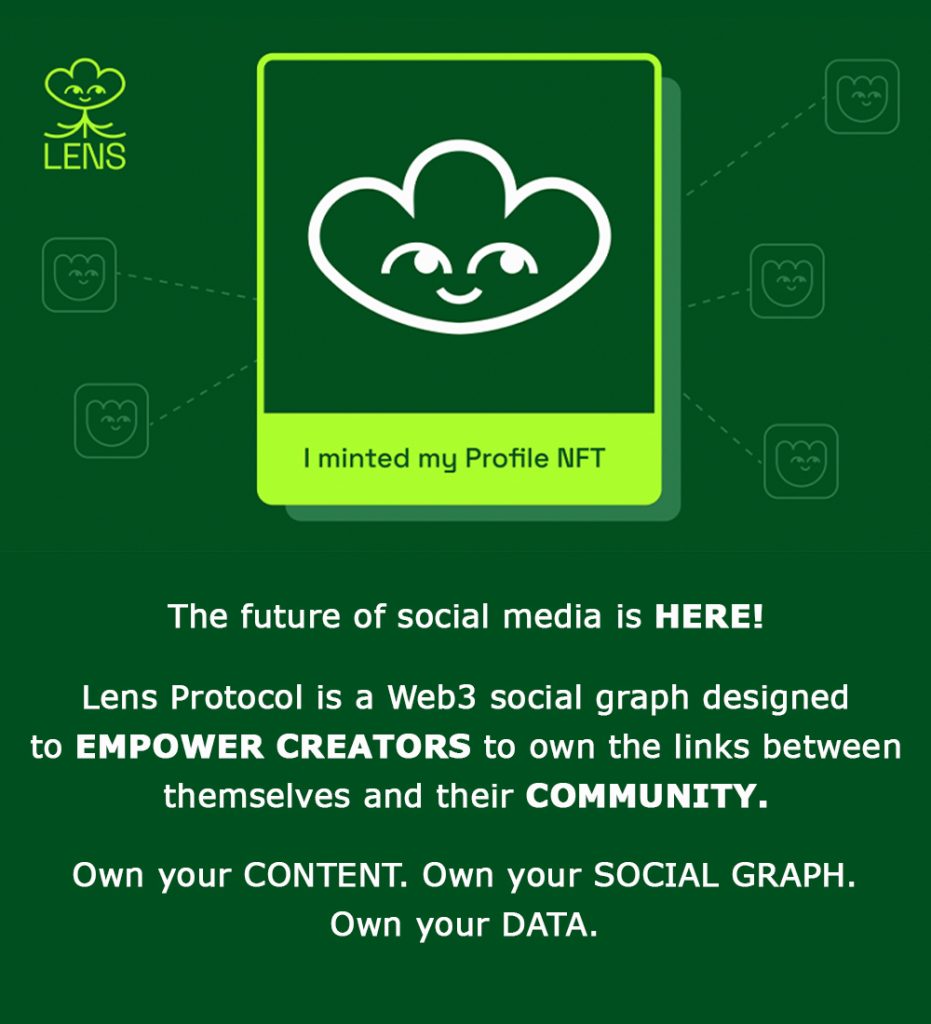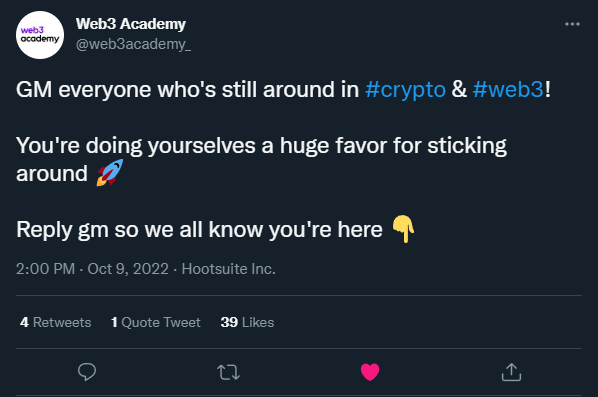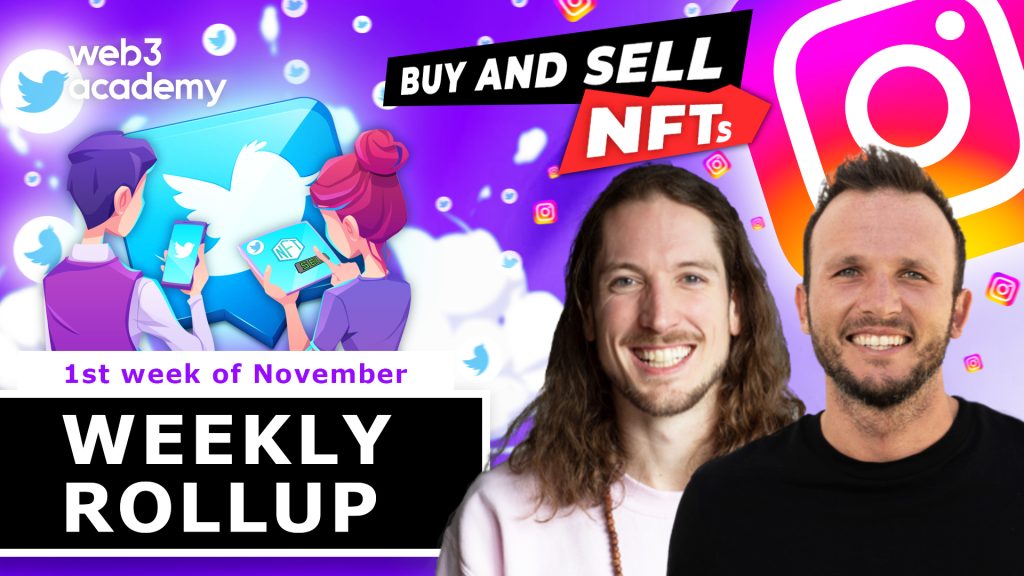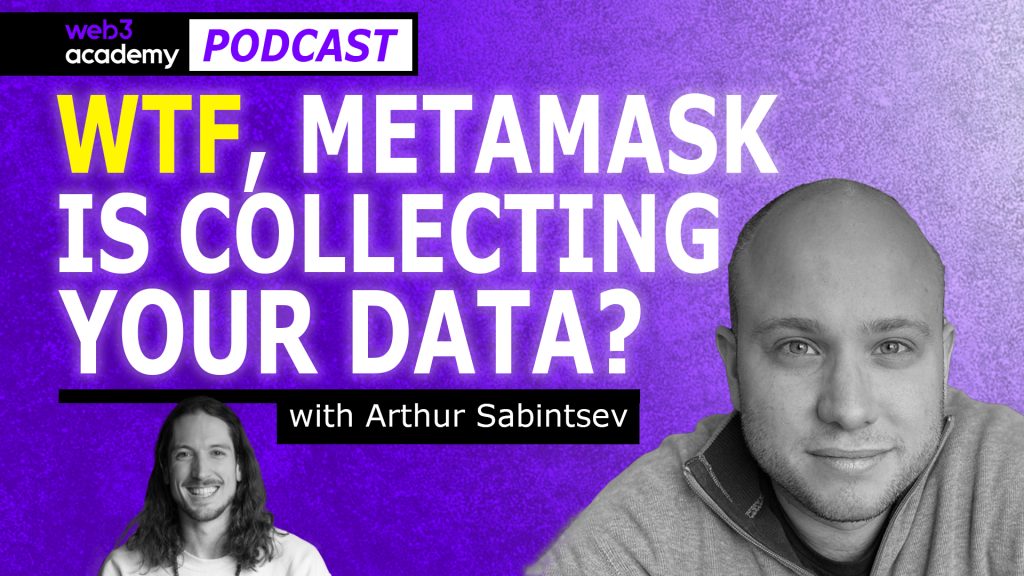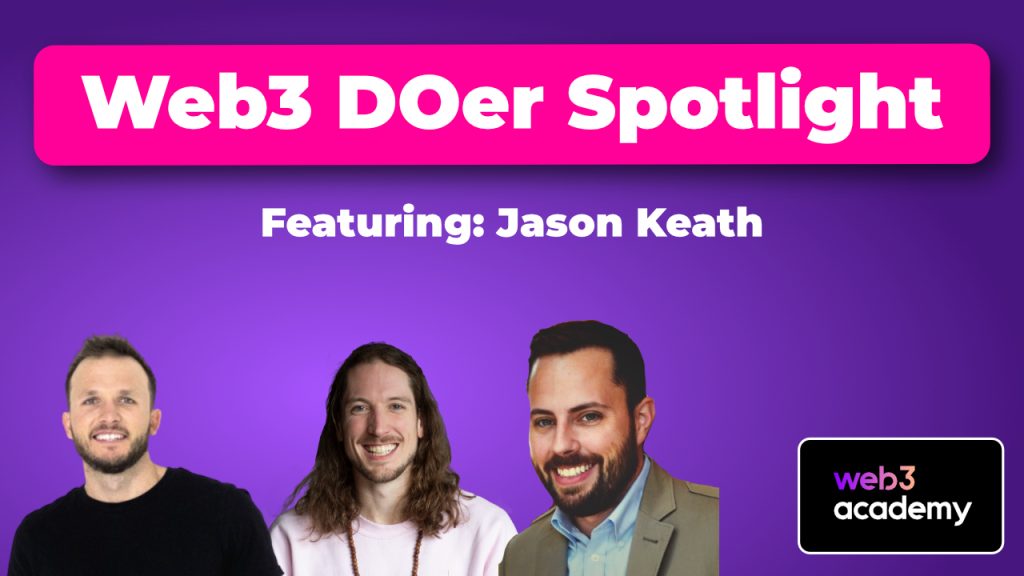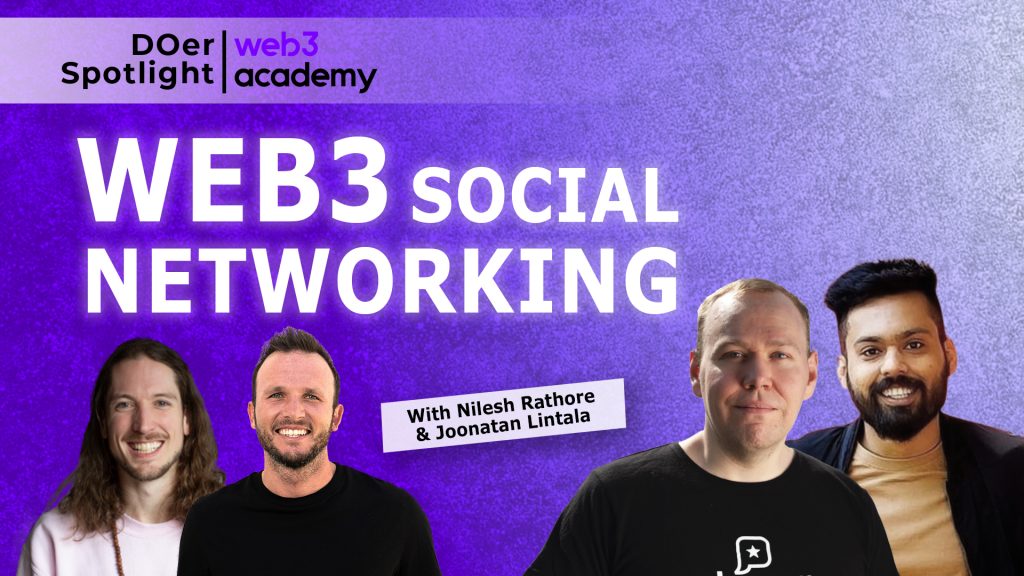
Web3 Social Networking: The Power Shift of the Decade? | Nilesh @ Orb & Joonatan @ Phaver
Or a Blip on Zuckerberg's Radar?
Watch or listen to all of our content on your favorite platform 🎧

THE TL;DR
GM frens!
$117 billion.
That’s how much revenue Facebook generated in 2021.
And the platform’s influencers? Facebook plans to pay them a combined $1 billion this year.
Yes, the people who are the cornerstone of platform engagement (and directly help Facebook generate marketing revenue) get less than 1% of the spoils.
But it’s not just influencers who get the raw end of the deal. Everyday users are subject to data mining (without remuneration), scammers, and complete or partial censorship—all because we don’t own our online identities.
To be fair, we didn’t really have a choice since there weren’t social networking options outside of these web2 corporations.
We either had to suck it up or miss out on some of the best parts of the internet.
That is until now.
While web3 social networking is still in its nascent stages, it promises fairer digital experiences, user empowerment, and identity ownership.
In this week’s DOer Spotlight, we chatted with Joonatan Lintala from Phaver and Nilesh Rathore from Orb who are both tackling web2’s social network incumbents.
We discuss:
- Why web3 social networking is the best way forward. ⏩
- Building a social network in web3 vs web2. 👷
- And why they chose to build on Lens. 👀
👉 If you’re itching to experience web3 social networking for yourself, make sure you tune into the podcast to discover how to get on the Phaver and Lens whitelists.
Let’s go, frens!
Reply to this email with your .lens handle and we’ll follow you over on Lens 🚀
Why Do We Need Web3 Social Networking?
Web2 social networks like Facebook and LinkedIn have made connecting with friends, family, and colleagues as natural as breathing.
But only if you follow their rules.
If you don’t, you’ll find that these web2 platforms are happy to serve you a lengthy ban. Some cases—like the recent censoring of Kanye West and his anti-semitic posts—are valid.
But only last year, Facebook employed a blanket ban on all crypto-related advertising, preventing legitimate startups from gaining traction.
While that ban is over, web3 organizations still need to jump through several hoops to advertise on the platform.
Instead, web3 social networking unlocks five key features that can improve our online experiences:
1. Ethical Advertising
Facebook is notorious for mining and sharing as much user data as possible and the problem is that it’s tricky to know what data they collect.
In fact, in his early days of working in social media, Joonatan recalls Facebook even being able to track users’ GPS locations to see which stores they visit.
And we recently saw the difference Apple’s privacy changes made. By preventing intrusive data mining, Apple’s changes cut $278 billion in revenue from the top four social networks.
But who’s to say they won’t find another way to extract data?
Instead, transparent on-chain social networks can remove this opportunity through smart contracts that anyone can audit.
2. Streamlined News Feeds
Besides Meta’s portfolio, there’s virtually no interoperability between social platforms. As a result, we have to constantly cross-promote and double-up on posts to ensure our followers see our content.
But with web3’s social technology, it’s possible to build a platform that aggregates content from all your connected networks. This means you and your followers can browse a single newsfeed to stay up-to-date instead of managing several platforms and logins.
3. Automatic Verifications
In the web2 world, we have to complete a verification process for every platform we want to use, including those outside of the social realm.
Credential verifications are also tedious and inadequate since there are no set standards.
For example, on a recent trip, Jay had to show evidence of his vaccine documentation, but all the authorities required was a PDF document that could’ve easily been photoshopped.
Similar situations can happen on professional networking platforms like LinkedIn. If I wanted to, I could easily add that I graduated from Harvard or Stanford. I could even say I worked at Google and there would be nothing to stop me from doing that.
Of course, it’s possible for people to double-check this information. But again, this is tedious and most people won’t bother unless they know people who work there.
On the other hand, fully-functioning web3 infrastructures allow us to create a single source of truth (the blockchain) for identity and credential verification, protecting us from scammers while reducing red tape.
4. Fairer Deals for Creators
Influencers and creators are the backbones of social network revenues. Their content brings significant engagement, allowing companies to effectively advertise.
But as you know, they receive a much smaller slice of the pie compared to the platforms themselves.
Instead, the open-source nature of the blockchain allows us to view creator revenues by looking at wallet interactions.
This means that:
- Creators can easily compare earnings between web3 social networks and choose the best one for them.
- Web3 social platforms can find creators who they believe are under-compensated and convince them to switch platforms (this can easily be done since creators own their content in web3).
- A savvy builder can easily clone an existing protocol to spin up their own platform if they can provide a better creator experience.
5. Identity Ownership
One of the biggest unlocks of web3 social networking is identity ownership. Right now, web2 social platforms can easily censor or ban you if you don’t fit within their terms and conditions.
Sure, some of these bans are logical and we can’t argue with that. Web3 isn’t about allowing hate speech, such as racism, or standing by while someone incites terrorism.
Instead, it’s giving people control over their online identities and protecting them when web2 platforms act heavy-handedly.
You don’t even have to act controversially like Kanye. All it takes is a simple mistake for a web2 social platform to delete your account and force you to start over.
For example, Joonatan’s grandma was kicked off Facebook for accidentally setting her age too low. She ended up losing ten years’ worth of interactions, photos, friendships, messages, and memories.
In another example, Kyle had a previous Facebook-based business shut down for unknown reasons. There was no one to contact about restoring it either, the platform simply deleted it and there was no one to talk to about fixing it.
But that’s enough praising web3 social networking for now. Let’s talk about actually building the web3 social networks of the future.

SOCIALS
Tweet of the Week
Building a Social Network in Web3 vs Web2
Building a social network—in fact, building anything—in web3 has some significant benefits when we compare it to building a web2 business.
Here’s why:
Web3 is Composable
Web2 is all about secrecy and proprietary information. Do you think Zuckerberg would let you clone whatever functionality you like from Instagram? Probably not.
In web3, on-chain code is freely accessible, meaning you can re-use code from whichever projects you like. This feature speeds up development cycles and allows developers to focus on functionalities that’ll make their protocol unique.
And, of course, composability is the bedrock of web3’s interoperability.
Web3 is Interoperable
I’ll preface this point by saying that, in its current state, web3 isn’t completely interoperable. And when it is, it can be clunky and slow. But we’re getting closer to true interoperability with each passing day.
However, with the current interoperability of NFTs, we can begin building protocols around them without approval from individual collection creators. We’ve seen this happen with various marketplaces and lending platforms, but soon it’ll extend to our social profiles thanks to protocols like Lens.
Above all, interoperability makes it more efficient to build unique products and services without adopting multiple tech stacks to juggle different protocol standards.
Web3 is Open-source
Interoperability and composability are nothing if developers have to ask for permission every time they want to build something.
The open-source nature of the blockchain also removes project risk since builders don’t have to rely on other protocols because devs can clone functionalities.
For example, there were many apps building on Twitter until they shut down their API which prevented further development.
Another example is when Facebook told businesses to run paid ads to increase page likes. But after that, they turned around and told businesses that, if they want their followers to see their content, they’d need to pay for advertising again.
In the open-source world of web3, these businesses wouldn’t have to put up with situations like the one above. Instead, someone could fork the Facebook codebase to create another social platform with a better user experience.
Question: Would you use a web3 social networking platform if it has a poor user experience?
👉 Reply to this email with Yes or No and tell us your thoughts.

SOCIALS
Meme of the Week
Why Did Phaver and Orb Choose To Build on Lens?
For Phaver and Orb, it came down to Lens’ interoperability, composability, and support—all keystone values of web3.
Lens already had the underlying frameworks and foundational contracts on Polygon so these projects didn’t have to build their own blockchain or social graph. Instead, they could focus on building their unique use cases on top of Lens.
And, in the true spirit of interoperability, Lens has integrations with other useful protocols, such as:
- Push Protocol for notifications.
- ENS for identity management.
- The LensPort marketplace which facilitates Lens NFT trading.
This means that Phaver and Orb don’t have to build these functionalities into their own projects either. Instead, they can leverage Lens’ existing architecture to tap into the network effect.
That’s the power of web3! 🚀
Besides this, Lens provides ongoing support to whoever builds on the protocol.
In fact, Lens was built by the developers behind Aave, a successful open-source liquidity protocol, meaning whoever builds on the protocol has access to successful web3 builders. On top of that, Lens provides grants to developers so they can avoid the pressure of building with VC funding.
Lens also runs several telegram groups where developers can network to leverage the knowledge and skills of everyone in the ecosystem.
Imagine where we’d be if companies like Facebook, PayPal, and Amazon built openly with each other!

POP QUIZ
What Was the First Mobile App on Lens?
A. Phaver
B. Orb
C. Refract
Find the correct answer at the bottom of this article. 👀
Unlocking the Value of Web3 Social Networking
While we can build all the web3 social networking platforms we like, the only way to unlock their value is through adoption.
And the way we do that is through a seamless user experience—the main thing that web2 platforms do well.
If we want web3 social networks to be the norm, they need to feel like web2. They need to have intuitive user interfaces and familiar onboarding processes.
We can’t have situations like Joonatan’s where he spent three hours trying to buy something on Opensea because he had native Matic instead of wrapped Matic.
Imagine ordering something from an overseas company but getting told you can’t because you have the wrong currency. It’s something that simply doesn’t happen in web2 and we need that same experience in web3.
The good news is that projects like Phaver, Orb, and countless others know this so it’s just a matter of time before web3 social networking is the status quo.
Thanks for reading, frens!

SPEED ROUND
A Little About Nilesh and Joonatan
For context, this is a speed round that we do with each of our podcast guests. Click here to watch the speed round. 🚀
Here are some of the questions and answers featured. 👇
What’s a token you’d never sell?
- Joonatan: The Permie access NFT for the Permissionless Conference
- Nilesh: My Lens handle
Who’s your favorite web3 resource at the moment?
- Joonatan: The TL;DR newsletter.
- Nilesh: Balaji Srinivasan.
What’s something you’ve purchased recently for under $100 that brings you joy?
- Joonatan: A balance stool to make work more comfortable.
- Nilesh: Laptop accessories.
Connect with Joonatan: Twitter
Connect with Nilesh: Twitter

FOR THE DOERS
Take Action & Level Up
READ
Our latest deep dive on Whether NFTs Are a Sustainable Business Model for Tokenizing Communities.
FOLLOW
Web3 Academy on TikTok. We’re guiding entrepreneurs into web3 but reaching them requires your help! 🤝
LEARN
Take our FREE Web3 Rabbit Hole Course to get up-to-speed on the foundational components of Web3 so you can confidently build, work, or use the fastest growing technology in history

LEVEL UP WITH WEB3 ACADEMY
Subscribe: Apple Podcast | Spotify | Youtube
Follow: Twitter | TikTok | Instagram | Facebook

POP QUIZ ANSWER
The correct answer is A. Phaver ✅

REPLY TO TODAY’S EMAIL
Would you use a web3 social networking platform if it has a poor user experience?
Reply with Yes or No to this email.




